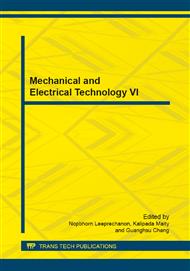p.63
p.68
p.73
p.78
p.83
p.89
p.94
p.99
p.105
A Hybrid Approach for Process Optimization in Taper Cutting Operation Using Wire Electrical Discharge Machining
Abstract:
Angular error is a major concern for the tool engineers during the taper cutting operation in wire electrical discharge machining (WEDM) process. Due to the complexity and non-linearity involved in the process, it is difficult to obtain good functional relationship between responses and process parameters. To address this issue, the present study proposes artificial neural network (ANN) model to determine the relationship between input parameters and output response. Bayesian regularization is adopted for selection of optimum network architecture because of its ability to fix number of network parameters irrespective of network size. Levenberg-Marquardt algorithm has been used to train the ANN model and the resulting network has good generalization capability minimizing the chance of over fitting. The model is developed based on the data obtained from a laboratory scale experimental set up. A set of six important input parameters such as part thickness, taper angle, pulse duration, discharge current, wire speed and wire tension is chosen to study the tapering operation in WEDM. Finally, a recent meta-heuristic approach known as Bat algorithm is used to suggest the optimum parametric combination for minimizing the angular error during taper cutting process in WEDM.
Info:
Periodical:
Pages:
83-88
Citation:
Online since:
August 2014
Authors:
Keywords:
Price:
Сopyright:
© 2014 Trans Tech Publications Ltd. All Rights Reserved
Share:
Citation:


